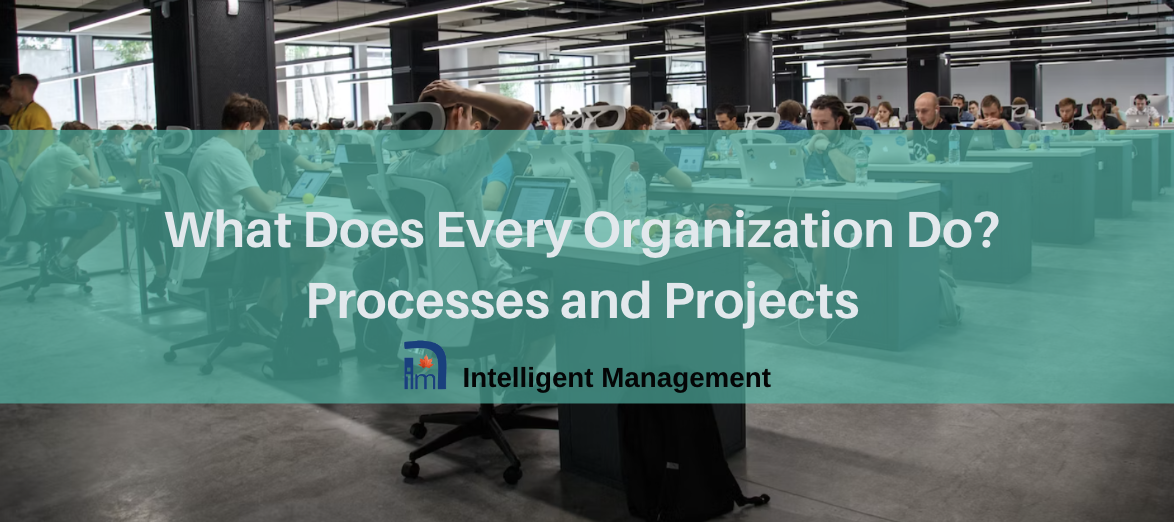
It’s time for companies to update their knowledge and approach to business–what may have worked before is inadequate for the complexity all organizations face today. Our new series focuses on what companies need to embrace today to succeed and scale up. It is based on our new book ‘From Silos to Network: A New Kind of Science for Management’ to be published by Springer this September!
What does every organization do?
In any organization, no matter their purpose or sector, there are two fundamental activities: repetitive processes and new initiatives (one-off projects).
We know by now that Organizations are inherently Systems. In other words:
“a network of interdependent people and resources working in processes and projects to achieve a common goal”.
It’s important to realize that processes and projects are linked and, in order to be able to manage the System, we have to understand the nature of this link.
We can define a PROCESS as a set of repetitive activities that follow a given procedure. A PROJECT, instead, is a special type of process: it is the set of actions to be carried out by resources/competencies required to satisfy specifications that are often set by a client in an established timeframe and within an agreed-upon budget.
Let’s use the following System as an example. We can think of each box in the System as a centre of competency that represents the main competencies necessary to sustain the flow of activities.
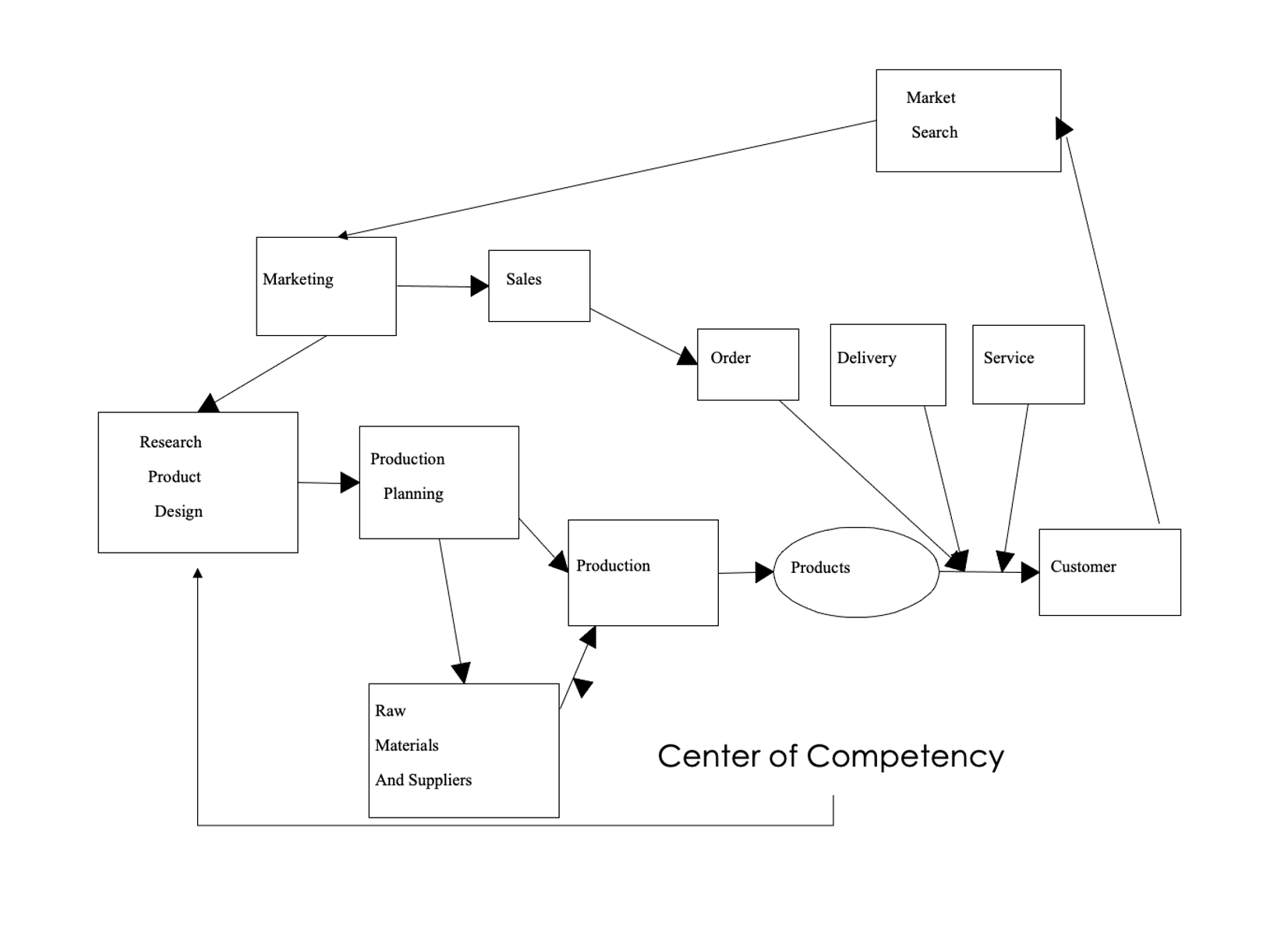
For each box we could draw a flowchart (see previous post) to illustrate the interdependencies involved:
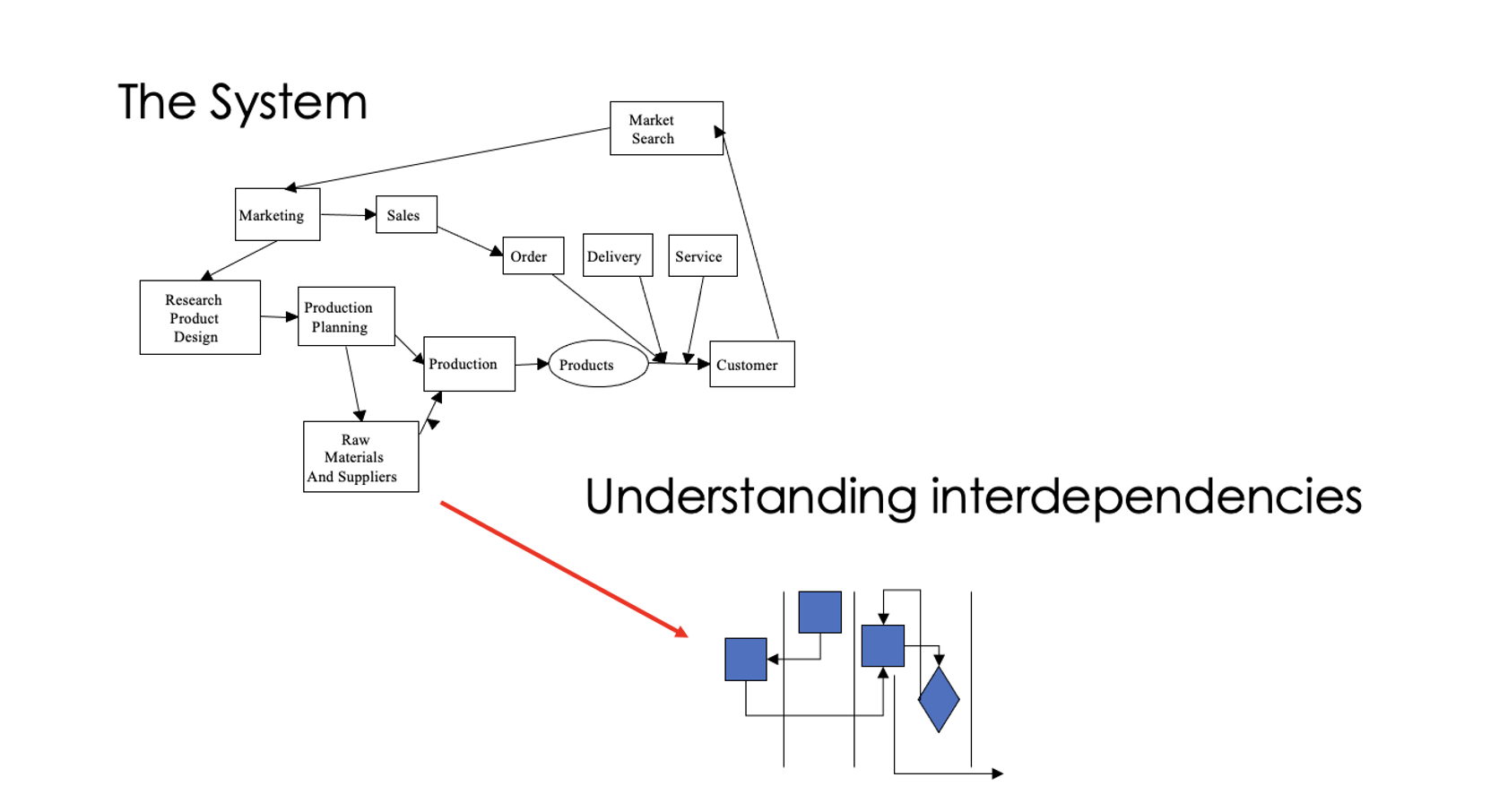
The question then becomes, how do we create the connection and so transition from the repetitive processes in an organization to creating and managing the Projects that are necessary to achieve the goal of the organization?
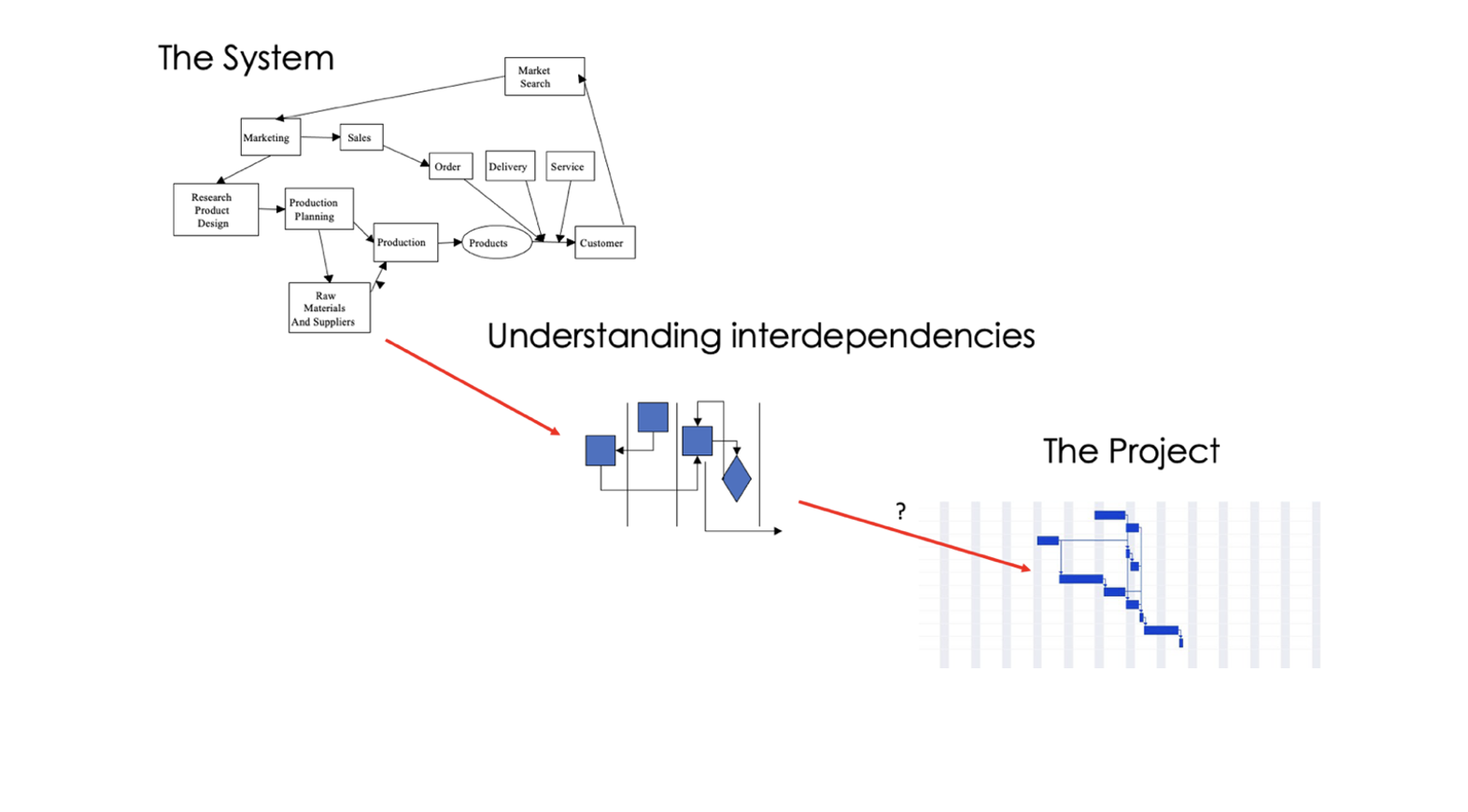
In principle, we could pick a set of resources from the processes, assign them to each task of the project and then schedule the project according to the availability of the resources. That may sound like a straightforward solution. Unfortunately, this “solution” would be based on “linear thinking” (where a reaction is proportional to the action).
While it may work sometimes, most of the time it would not. We face a problem of complexity, where nonlinear interactions play an important role.
Projects and complexity
Organizations are complex systems and the people who work in them live and evolve in a complex environment.
Complexity can neither be simplified nor eliminated. In an organization, we have to learn how to embrace, live with, and manage complexity. We need an approach guided by “nonlinear” thinking (where a reaction is not proportional to the action).
This poses many challenges in an organization. Generally speaking, there is little or no awareness of complexity and its implications in business and management. It is certainly lacking in the traditional world of Project Management. Consequently, embracing complexity becomes a problem of knowledge but also a problem of handling the cognitive and emotional issues connected with embracing a way of managing fit for complexity. This is the challenge represented by the transition from Processes to Projects.
Dr. Eliyahu Goldratt who developed the Theory of Constraints addressed the problem of Project Management from a paradigmatic perspective and developed a breakthrough, systemic solution he called Critical Chain. In our work, we have taken the Critical Chain solution to an organizational level by challenging the assumption that projects are scheduled based on available resources. In our work, we look at available competencies.
Projects and competencies
At the most basic level, the question the Theory of Constraints (TOC) addresses is: what can we do with what we have? How can our resources generate the most sustainable value? When we talk about individuals, the question becomes: How can we maximize the value people bring to the System?
We feel very strongly that, along with their ingenuity and passion, the highest value people bring to their organizations is found in their Competencies. These competencies are both the ones they currently possess and those they can acquire.
Competencies are not limited to what people write in their CVs, what they have studied, their work experience, etc. For instance, people in accounting could easily carry out relatively simple tasks that are completely unrelated to their day-to-day activities, such as supporting Sales in extracting and ordering a list of customers from a database according to a defined criterion. It is important to understand that this kind of systemic collaboration would be impossible in a siloed organization. It would be perceived as a “distraction” of resources from the business function to which they “belong”. In a “functional” organization the only optimum possible is local, NOT global (for the benefit of the entire organization).
The database task example could easily represent a task in a project where competencies are associated with individuals; this is what facilitates Involvement as it allows people to exercise their competencies in a much broader context than the artificial confines of a business function and it is the catalyst for the implementation of a truly Systemic Organization.
The diagram illustrates the way competencies are associated with every task to be scheduled in a project.
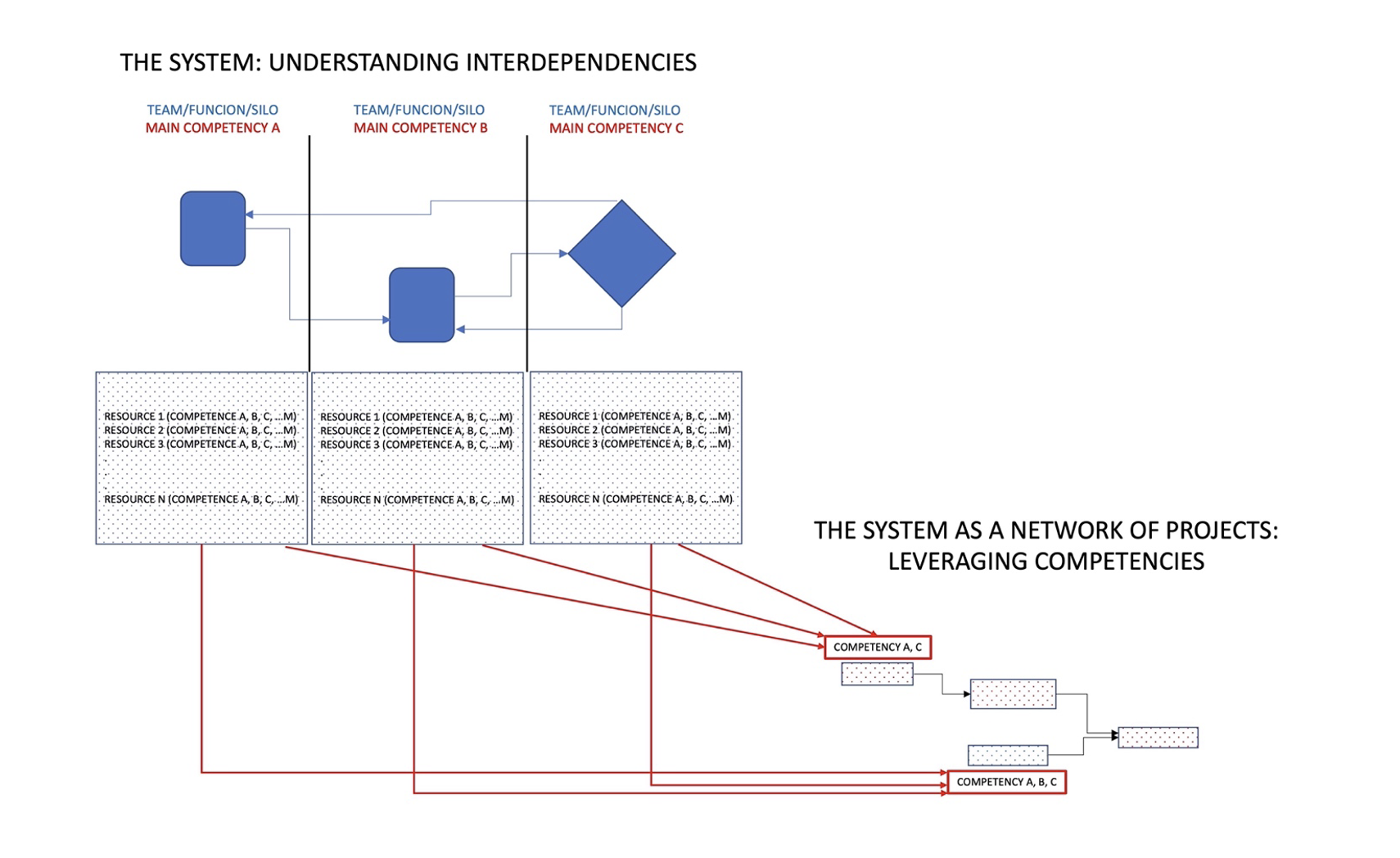
Freeing competencies up from business functions
This is the first step towards overcoming the inherent limitations of a conventional hierarchy: competencies are associated with individuals instead of being fished from a business function to which they “belong”. An organization will be populated with resources that have various competencies. Once we map the competencies of each resource, we can also identify the different levels of the competence the resource possesses, e.g. high level, medium level or low level.
The levels of competencies open up new opportunities for flexibility in the way we schedule the tasks of a project. A resource traditionally assigned to the “Center of Competency A” will have a high level of “Competency A”, but may also possess a low level of “Competency B”. If a task in a project does not require the highest level of Competency B, we can use the resource with a lower level of Competency B, even if that resource belongs to the center of Competency A. If we require Competency B, we do not always need to look for the resource in the Center of Competency B. We can look for the right level of Competency B that is available anywhere in the System at the required time.
This is key in a multi-project environment as it frees up capacity that would otherwise not be used and it facilitates the multiplication of projects that can be managed simultaneously.
To find out more about ten guided steps to a systemic leap ahead for your company, contact Angela Montgomery at intelligentmanagement@sechel.ws
SCHEDULE AN INTRODUCTORY CALL WITH US
Intelligent Management works with decision makers with the authority and responsibility to make meaningful change. We have helped dozens of organizations to adopt a systemic approach to manage complexity and radically improve performance and growth for 25 years through our Decalogue management methodology. The Network of Projects organization design we developed is supported by our Ess3ntial software for multi-project finite scheduling based on the Critical Chain algorithm.
See our latest books Moving the Chains: An Operational Solution for Embracing Complexity in the Digital Age by our Founder Dr. Domenico Lepore, The Human Constraint – a digital business novel that has sold in 43 countries so far by Dr. Angela Montgomery and ‘Quality, Involvement, Flow: The Systemic Organization’ from CRC Press, New York by Dr. Domenico Lepore, Dr. .Angela Montgomery and Dr. Giovanni Siepe.

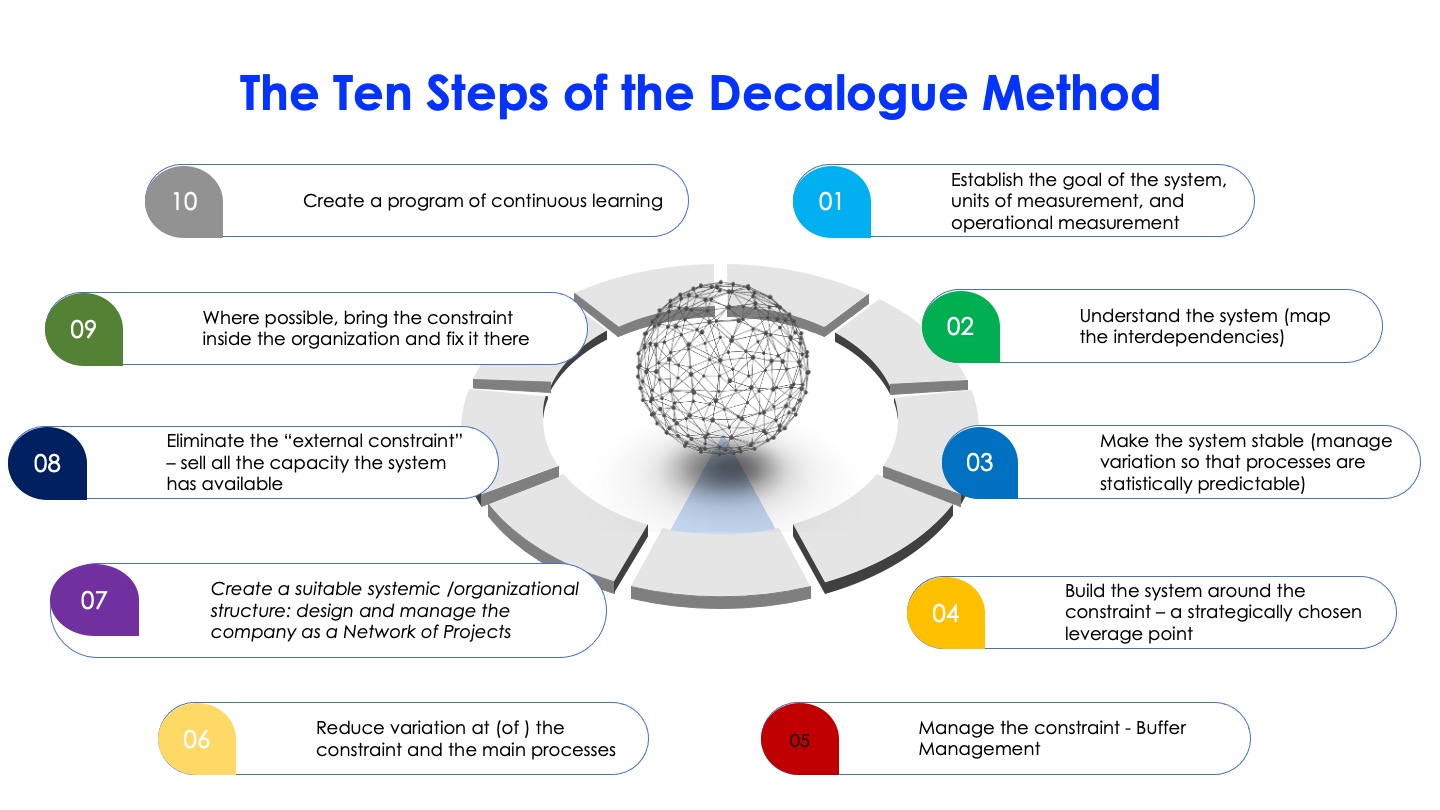





Leave a Reply